Guarding the Gates of Hell

EUROPay – MasterCard – VISA
“the global mobile financial payment cartel controlling every bank issuing credit and debit cards”
What have we done to ourselves?

Designers and Builders of new or existing things transformed into interactive wireless communication nodes by means of Near Field Communication (NFC).

What have we done to ourselves?
Are the chipped credit cards we’ve been compelled to use secure? Yes.
Is the article “FAKE NEWS” linked below a crock of shit? Yes. The article falsely states the chips in our credit cards –EMIT– data. The article is a con job attempting to mislead people into buying RFID “blockers.” The article’s “warning” is a specious lie of omission.
A specious statement is one that uses the truth to tell a lie of omission. Can the data stored on the chip of our credit cards be read? Yes. There is data stored in the chip. Does the readable data stored on the chip identify us personally? No.
Does the chip itself –emit– the data as the article falsely claims? No that is the lie of omission.
The chip in our credit cards is a “passive” RFID chip. It has no power of its own. It does not –emit– anything. A powered reader like a point of sale card reader or a cellphone powers the passive chip set by means of a magnetic field eminated by the powered device which can then read the data that is more appropriately explained as “pull.”
If you are standing around and somebody holds a cellphone within 1″ of your buttocks where so many keep their cellphone in their back pocket a cellphone or large bulky portable card reader can be used to (((tap)))® on your heinie and any data stored in the chip set’s memory can be read.
Just as an aside I must ask “What would –you– do if somebody tapped you on your ass with a cellphone?

The contactless cards and anything being manufactured that a cellphone can (((tap)))® can only be powered and read from a distance of ~1″. They use a wireless network protocol called Near Field Communication (NFC) and “near” means “near.”
Furthermore, “What data can actually be read anyway?”
In the context of financial payment cards all that can be read from the chip in our credit cards is a token. Think of a token as a unique arbitrary alphanumeric nickname for your actual account. Who is a67c445x89?
Nobody knows who a67c445x89 is except your bank which receives that token (nickname) sent over the cellular network and uses it to look up the real you. Furthermore, each time the token is accessed for use it is changed.
Anything that uses NFC for financial transactions is very secure. Only an idiot would believe the global mobile financial payment cartel would implement an insecure means of transacting contactless financial payments.
Your credit card account cannot be hijacked by surfers standing near you and reading your account data as these fake articles claim or otherwise infer or imply.
You do not need to buy “blockers” unless of course you have no problem wasting money to buy false peace of mind.
Are the chipped credit cards we’ve been compelled to use secure? Yes.
Is this linked article a crock of shit? Yes. The article falsely states the chips in our credit cards –EMIT– data. The article is a con job attempting to mislead people into buying RFID “blockers.” The article’s “warning” is a specious lie of omission.
A specious statement is one that uses the truth to tell a lie of omission. Can the data stored on the chip of our credit cards be read? Yes. There is readable data stored in the chip.
Does the chip itself emit the data as the article falsely claims? No that is the lie of omission.
The chip in our credit cards is a “passive” RFID chip. It has no power of its own. It cannot emit anything until a powered reader like a point of sale card reader or a cellphone powers the chip.
So it is true the chips do store data but they do not emit data. It is more simplistically useful to understand the data is metaphorically “pulled” from the chipset by the reading device because that reading device provides the power to do so.
The contactless cards and anything being manufactured that a cellphone can (((tap)))® can only be powered and read from a distance of ~1″. They use a wireless network protocol called Near Field Communication (NFC) and “near” means ~1 inch (~25mm) so anybody trying to read your card in your wallet or a purse would have to be tapping on your hinder and its almost preposterous to think it would not ordinarily be felt. Surrepticious contact may be made in crowded buses when its standing room only and bodies are packed up against one another so there are circumstances which can bring your card into proximity of a bad guy with a reading device; but again, the reading device has to placed and held onto or near your hinder for the split seconds it takes to power the chip and read its data: the encrypted data.
Furthermore, all that can be read from the chip in our credit cards that identifies your account is a token. Think of a token as a unique alphanumeric nickname for your actual account. Who is a67c445x89?
Nobody knows who a67c445x89 is except your bank which receives that token (nickname) sent over the cellular network and uses it to look you up on their secure servers. Let’s say somebody was hugging your butt on the bus this morning. What did they get? Where can it be used? Furthermore, the nickname is encrypted on both ends of the communication.
Anything that uses NFC is very secure. It is ludicrous to believe the banks would use a technology that was not secure. Your credit card account cannot be hijacked by surfers standing near you and reading your account data as these fake articles claim. I feel no compulsion to buy and use any “blockers” and neither should you.
https://wtop.com/business-finance/2019/12/your-credit-card-may-be-talking-from-your-pocket/
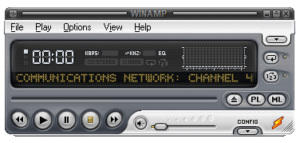
Like many of us, my love for music began as a young boy when I bought my first vinyl audio recording. Bob Dylan’s (1969) recording was one of my first.

Record albums were pressed in “vinyl” in those days, a material which nearly went extinct when other formats came along; formats which were less expensive to manufacture, less expensive to distribute and perhaps most importantly to be considered –more convenient– for people to buy and use.
Them rascally automobile manufacturers never figured out how to put a record turn table in a car so when we took our sweethearts to the drive-in we had to settle for eight track tape players.
I’ve heard it said Waylon Jennings gave Conway Twitty the nickname “Mr. Panty Dropper.” I’ve been playing guitar and trying to sing like Conway Twitty for decades but I’m telling you, back in the day they called boys like me hoods and we were way hipper than jocks because hoods knew the secret to hitting a home run with a girl was an Elvis tape.

The 8-track tape format had its day and tried to hold on for dear life. Capitalism and the ever present pursuit of the better mouse trap brought us the audio cassette tape format invented by Lou Ottens a Dutch audio engineer.
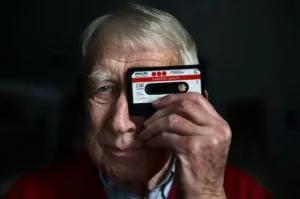
Not to be left behind the Japanese took the world by storm with the SONY Walkman® becoming a huge success as the way to playback audio cassette tapes as we roamed far and wide taking our music with us. I actually still have a Walkman and use it when occasionally taking walks to ponder my navel.
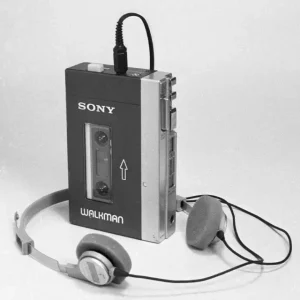

However, not unlike Little Miss Muffet who sat on her tuffet most musicians have been sitting on their asses and when the spider(s) came to sit down beside them the spiders took all the profits from them.
The spider was “streaming” an “access anytime and anywhere” distribution format by means of the Internet, the World Wide Web, and the “freemium” business model that not only disrupted CD it radically changed the quality of the audio consumers of music got indoctrinated into liking and it hasn’t changed.
If you want better audio quality you buy the CD. If you want the best audio quality you buy vinyl. If you want free or nearly free music you stream it.
People traded audio quality for convenience. Listening to music on a cellphone is not unlike going back in time and listening to music as if one were listening to AM radio with little teeny earphones on.
No tangible format like tape or plastic disks were needed anymore thank you very much; just pay a monthly streaming bill after the door swings shut on the free stuff.
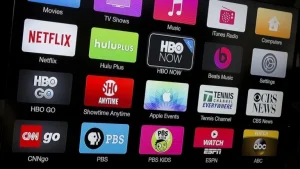
Streaming media brought to all of us by convenience hacked our human behavior by exploiting our tendency to want something free. The freemium business model has proven to be a successful means of providing instant gratification.
Although vinyl recordings and other distribution formats remain in retail their sales have taken a big hit. After all, it is very difficult to compete with bits and bytes that are given away free as the means to lure customers to the download button.
That’s the reason the pusher man gives away the first hit of heroin; he knows it will get you hooked and you’ll be paying from then on.

Even the pusher man has competition and the streamers are vulnerable to better mouse traps. The mouse trap that is slowly and surely tripped to fall on the neck of streaming companies and many other unsuspecting mice is a technology 60% of Americans are using since it was brought to America in 2014: Near Field Communication (NFC.)
The ability to tap-and-pay with a cellphone has opened up a world of possibilities to those who asked “If I can tap-to-pay what else can I tap on?”
All that stands in the way is time and the understanding by song writers and musicians –creators– that the use of NFC can, will and is disrupting the streaming business model. NFC can and will put the power and financial rewards of what is created back into the hands of the creators themselves.
Clinton Gallagher has become an –NFC expert– that got started learning how to make it happen in 2016.
If you’re one of the aforementioned 60% of Americans (or an early adopter from another nation) that analysts reported as of Q4 2022 have begun using their cellphone and contactless credit/debit cards to (((tap)))® and pay you will understand the time has come to put NFC to use for you…you might even get the clues in this blog leading the way to make it happen for creators.
You’ve just read Clinton Gallagher’s explanation of the facts of life as they have become.
Follow up with this embedded video created by Rick Beato who explains why he thinks the record labels are no longer relevant to musician’s wanting to monetize the music they create…
Like most of us, my love for music began as young boy when I bought my first albums; Zimmerman’s was one of my first.
Record albums were pressed in “vinyl” in those days, a material which nearly went extinct when other formats came along; formats which were less expensive to manufacture, less expensive to distribute and perhaps most importantly to be considered –more convenient– for people to buy and use.
Them ol’ automobile manufacturers never figured out how to put a record turn table in a car so when we took our sweethearts to the drive-in we had to settle for eight track tape players.
I’ve heard it said Waylon Jennings gave Conway Twitty the nickname “Mr. Panty Dropper.” I’ve been playing guitar and trying to sing like Conway for decades but I’m telling you, back in the day they called boys like me hoods and we were way hipper than jocks because hoods knew the secret to hitting a home run with a girl was an Elvis tape.

Tape formats stayed with us for a long time. In fact the cassete tape that replaced the eight track tape format is still on the shelves this year of 2019 but it was the CD and the DVD formats that followed tape and really kicked shit into a higher gear as some of us who play the most famous riff in rock know all too well…
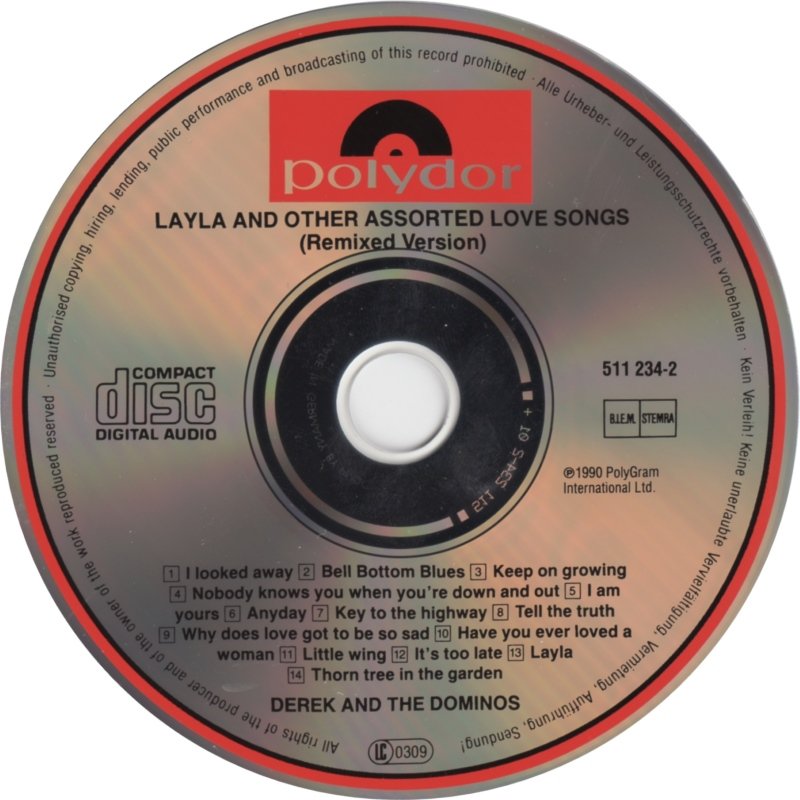
I bet you thought I was going to start talking about Stairway to Heaven? Well yea but I still have the Bell Bottom Blues, I’ll alway have the Bell Bottom Blues. I literally wore out the first Layla and Other Assorted Love Songs CD I purchased long ago and I’m working on the second CD. One of my guitars is named Layla so go figure.
So I do figure and I figure its time to comment about the new digital formats that do not wear out. More importantly to comment about the physical media that is used to distribute the digital music and what is about to become the way music will be sold and distributed.
Like CD and DVD we’re still talking about a type of plastic media to distribute music but we no longer need to buy and use an electronic device to play the music. The plastic that is about to change the music industry is a format called SmartCards and the electronic device most frequently used to purchase and play music is called a SmartPhone; that doohickey many of us on the planet carry around every day and night.
The SmartPhone has become a phenomena. Late night comedy shows make big money joking about them. Students writing their PhD thesis write about them. Parents wonder if they did the right thing buying their 12 year old daughter an iPhone. You get the picture?
The number of global SmartPhone users grew from 2.1 billion in 2016 to around 2.5 billion in 2019 and continues to grow by leaps and bounds.
As the big boys who own and control the global financial payment markets know a phenomena is a terrible thing to waste. So they wasted no time developing the means to use a SmartPhone to buy shit. Lots of shit in fact. Anything and everything that can be purchased can now be purchased using a SmartPhone.
The big boys wasted no time making financial transactions faster and more convenient. They know human behavior. They know human beings salivate like Pavlovian dogs and will do just about anything for instant gratification. So what did “they” do? They adopted contactless payments that they first rolled out in Europe and other “not USA” nations. Voilà! instant gratification.
Contactless payments is slowly but surely sweeping across America. Its here and its here to stay. The era of tap-to-pay will eventually do to the plastic credit card what the plastic credit card did to the paper checkbook. How do I know this?
I know this because that’s what the big boys want and in America what the big boys want the big boys get and the big boys get what they want because people in America have become Pavlovian dogs.
So you might be wondering, “if I can use my SmartPhone to tap-to-pay what else can I tap on?” Well, the answer is lots of stuff. The Near Field Communication (NFC) wireless cellular network communication protocol which makes tap-to-pay possible is a global networking standard. That standard is available to any and all of us smart enough to learn to use. All it takes is that “vision thing.”
So as the founder of tapABILITIES I have the vision thing. What I’m going to tell you by wrapping up this way too long blogged commentary is the fact that plastic is still with us and will be for a long time to come.
The vison fairy told me that plastic contactless SmartCards will be the way music is sold and distributed.
Like the ~$127 billion gift card industry selling and distributing music with plastic is all about BIG MONEY. Selling and distributing music will follow the same proven business models as gift cards have. Pavloa says so. Keep your eyes and ears open boys and girls because any day now you will be using your SmartPhone to (((tap)))® on a piece of plastic to buy, download, and playback your favorite tunes…
